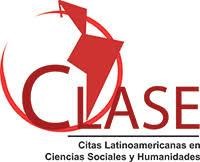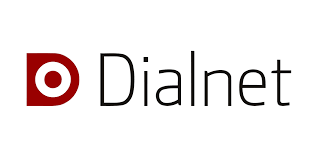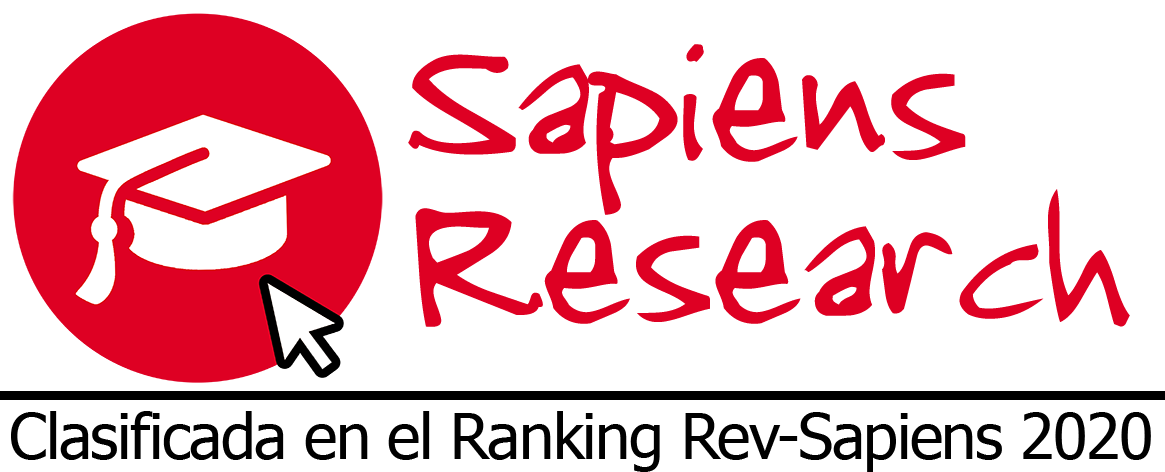Guide for authors
Cultura Educación y Sociedad accepts original and unpublished articles that contribute to the dissemination of knowledge in the area of education framed in the social and human sciences, with emphasis on: educational quality management, curriculum and pedagogical processes, ICT-mediated education and educational psychology, which demonstrate a solid theoretical, epistemological and methodological foundation. Cultura Educación y Sociedad accepts articles in Spanish and English, respecting style and grammatical rules.
Authors should organize their article according to the specifications detailed in the corresponding template that can be downloaded at the following link (download)
The author(s) of Cultura Educación y Sociedad is/are obliged to comply with the editorial requirements established in these guidelines, the article that does not comply with all the guidelines detailed in the guide for authors will not be submitted to the editorial process.
The article submitted to Cultura Educación y Sociedad must be in Word format, Arial font, size 12 and 1.5 spacing. Authors must also submit through OJS the Format of certification of originality of the article by the author (download), where in addition to the title of the article and data of the authors such as names, author of correspondence, institutional affiliation, e-mail, country and signature, it is emphasized that the manuscript is unpublished and original, that it has not been published before. country and signature, it is emphasized that the manuscript is unpublished and original, that it has not been sent and will not be sent to any other journal, while it is in the process of evaluation and publication in Cultura Educación y Sociedad, as well as specifying the contribution of each of the authors following the fourteen guidelines on authorship established by CRediT (Contributor Roles Taxonomy). The average editorial management time between receiving and publishing an article is 6 months.
All articles submitted to Cultura Educación y Sociedad must be accompanied by the author information form (download) which includes, among other data, the following: last academic degree obtained; university, city and country; e-mail (institutional); ORCID; Google Scholar; Scopus Author ID, as well as the form for the assignment of autor`s copyrights (download).
At the time of submitting the article, authors are responsible for uploading all metadata to OJS. All authors of the manuscript must be included in the application, with their respective institutional e-mail addresses; the inclusion of new authors will not be accepted once the editorial process of the manuscript has begun.
Cultura Educación y Sociedad publishes original and unpublished research results under the typology of research articles and systematic review. The length of the manuscript should not exceed 8000 words.
Scientific research article: a document that presents in detail the original results of completed research projects. The required structure is as follows: Title; Abstract; Keywords; Introduction; Methodology; Results and Discussion; Conclusions and References.
Review article: a document that presents research results in which other research results published on the same subject under study are analyzed, systematized and integrated. It is characterized by presenting a careful bibliographic review of at least 50 references. Special attention will be paid to updated references in the review, taken from Scopus and Web of Science. The required structure is the following: Title; Abstract; Keywords; Introduction; Methodology; Results and Discussion of the Review; Conclusions and References.
The following is a brief description of the main characteristics of each of the sections of the different types of articles:
Title: the title should be brief, concise and descriptive. It should not contain references or non- standardized abbreviations, nor be longer than 15 words. It should be in Spanish and English.
Abstract: should be structured (introductory idea with the objective, methodology, results and conclusions), not exceeding 250 words. The abstract should briefly describe the purpose or objective of the study, how it was conducted, the most important results and the main conclusions drawn from the results. References and abbreviations should be avoided. It should be presented in Spanish and English.
Keywords: authors are asked to provide four to six keywords to identify the main topics addressed. These keywords are used for indexing purposes and should be included in the UNESCO Thesaurus. In English and Spanish.
Introduction: authors should define the significance of the work and the justification for its publication. Any substantive discussion should be brief and restricted to relevant material. Evidence descriptors of the topic studied, what is known, what is believed about the problem (should incorporate citations from mainstream scientific literature in different languages), Question or unresolved problem (however, to date there are no data); central questions. Hypothesis, goals, objectives, purposes: describe why the study was done, justification in terms of scientific reasoning inherent to the process. It is recommended to organize in four or five paragraphs. For the writing of the introduction, the particularities of scientific-technical writing should be taken into account: internal coherence, logic, main ideas, secondary ideas, connectors, verb tenses (past or present continuous preferably), the writing should be impersonal (third person).
Literature review: optionally, research articles may include a literature review section. This is the theoretical foundation of the research, which will allow supporting the results obtained and discussing coincidences and/or disagreements with other authors, but above all, demonstrating that the research proposed is an effective scientific contribution (it must incorporate citations from mainstream scientific literature in different languages).
Methodology: Describe directly how the research was conducted; briefly incorporate the epistemological references. It focuses its contributions on the research method and design (populations, documentary and/or empirical units of analysis; data collection techniques and instruments; validity and reliability of the instruments; processing techniques and analysis of the results), procedural systematization. It refers to the different moments or stages of the research process; substantive and important information is rescued to understand how the theoretical, empirical or propositional findings were obtained.
Results and discussion: The findings expressed as results are oriented to the deepening and argumentation in correspondence with the central theoretical categories addressed in the article. It is important to show a broad understanding of the results and their implications. The data should be described from the findings, then the discussion leads to inference (generalization, explanation, analysis, interpretation and understanding). Paragraph subtitles can be used in correspondence with the methodological systematization stated in the results. In case of incorporating statistical determinations, they must be really significant. It is suggested that the analysis be based on contrastive processes between: objectives - supporting theory - significance of the finding or data in itself - critical/argumentative position of the researchers. Include citations of recent mainstream literature that serves as a basis for the presented (in different languages).
Conclusions: should be independent and linked to the research objectives, with new hypotheses when justified. Include recommendations when appropriate. All conclusions are based on the results, however, they should transcend them. Are precise, not redundant. They visualize the impact of the study and possible future lines to deepen in the central thematic area of the article. Do not include citations in this section.
Financing: Authors should specify the sources of funding that gave rise to the research from which the submitted article is derived, for this purpose the following should be provided: title of the project, funding entity or person, project code or identifier (optional).
Declaration of conflict of interest: Authors must specify that the submitted work does not represent any conflict of interest with them, the journal, the publishing entity and the financing entities.
Acknowledgements: Authors may extend their thanks to individuals (provided they have authorizations for the use of names), entities or others who have made the publication possible through the provision of technical, operational and financial resources (optional).
Authors are invited to take special care not to suppress the authorship of persons who have participated in the research process from which the article derives. In case of doubts about this point, it is recommended to consult the COPE parameters on contributions and authorship, available at the following link
Likewise, the public or private entities or personal contributors that have made the publication possible must be mentioned, adequately stating the references of the projects or other identifiers that make it possible to identify the origin of the resources.
References: references must have the correct format according to the citation style of the journal (APA latest edition).
Figures must be sent in a minimum resolution of 266 dpi in jpg format.
Figures and tables should be numbered and labeled with a simple title to be placed below them. If partial data are reproduced, their source must be indicated, specifying author, date and page. These data should be indicated below the table or figure if they are reproduced in their entirety. If only some data is referenced within the text of the table or figure, the source must also be indicated.
When an indirect or paraphrase citation is made within the text, the author's last name should be indicated, followed by the year of publication of the work being referenced. Example: Huiping and Leung (2017) suggested using 11-point Likert items (0 to 10) which help in closer to normality and interval scales.
Direct quotations of less than 40 words are placed within the text, always using double quotation marks, as follows: (author, year, page or pages if more than one). Example:
Marín (2023) "the definition of public policies in education is a complex and multidimensional process mediated by different actors, where the state stands out" (p. 26).
Quotations of 40 words or more should be in a separate paragraph, with a smaller tabulation, without quotation marks, indented on both sides, without italics and preceded by a colon to emphasize that the words of a third party are being used.
Example:
According to González and Villaseñor (2010):
Talking about gender in education refers to the fact that boys and girls, women and men, are able to begin to transform value and behavioral patterns that allow them to effectively acquire different skills and abilities based on respect for their sexual and gender differences, as a pedagogical principle that enriches people (p. 28).
Consecutively numbered footnotes are to be used only for clarifications and comments. The list of references will only include cited literature.
Bibliographic references will be made based on the APA style (latest edition). To facilitate the reader's use of the referenced sources, the data must be correct and complete.
Finally, references should be arranged in alphabetical order.
If several works by the same author are referenced, they should be ordered chronologically from the most current to the oldest.
If there are several documents of the same year by the same author, a lowercase letter should be added to distinguish them both in the references and within the text.
It is recommended that the primary bibliographic sources be taken from Scopus and Web of Science.

 English
English
 Español (España)
Español (España)




_12.53_.27_p_. m_._3.png)





_12.57_.35_p_. m_._3.png)
_12.50_.37_p_. m_._3.png)



